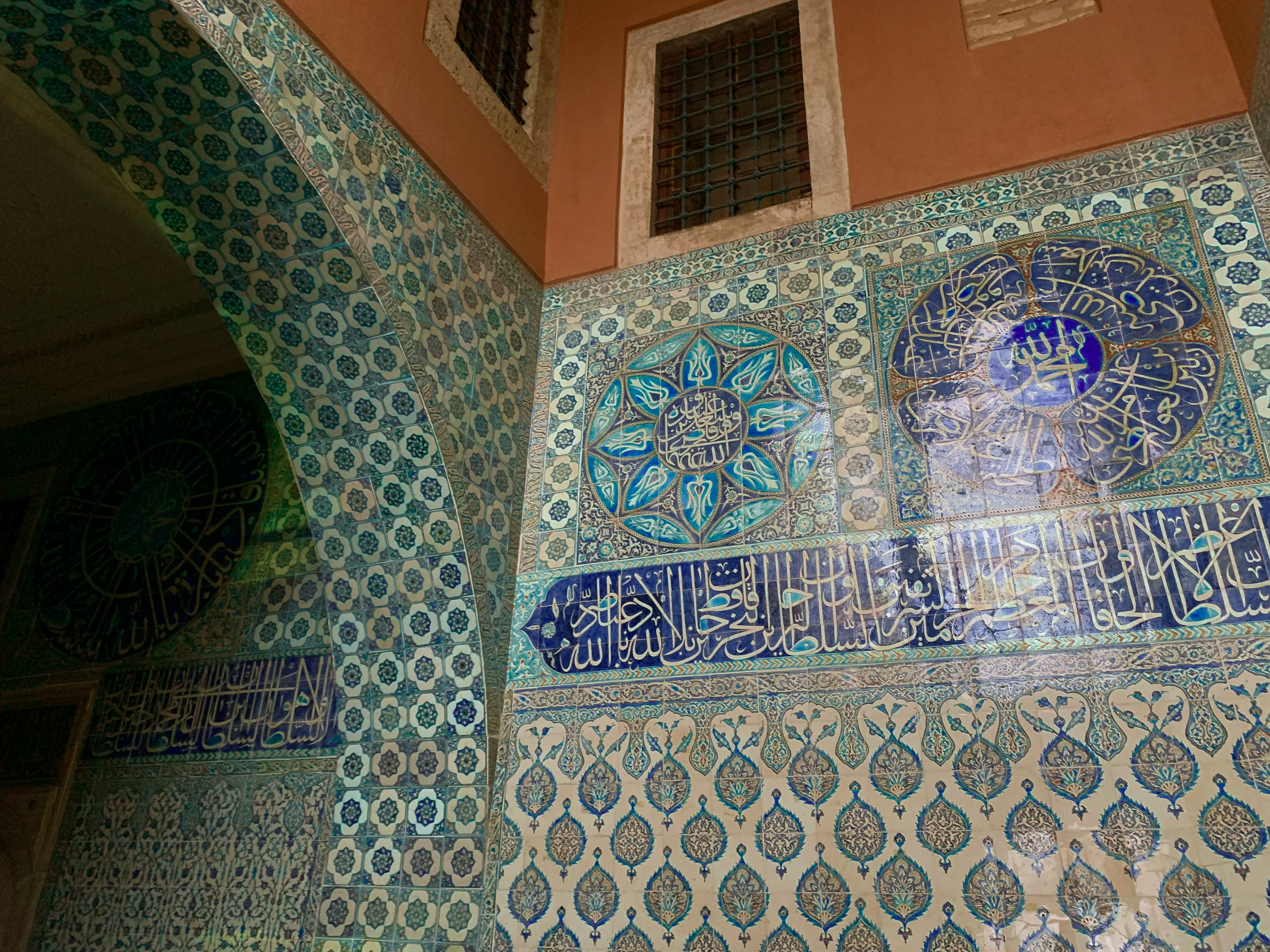A Brief History of Iznik Tiles
The most beautiful piece of history in Istanbul.
Iznik pottery gets its name from its town of origin, Iznik, Turkiye. This style of pottery is found all across the city of Istanbul as a sign of luxury and wealth in the Ottoman Empire, one of the most powerful empires during the 15th and 16th centuries. This style of ceramics was inspired by Chinese blue and white porcelain which dates back to the Tang dynasty from the years 618 to 907. Additionally, similar styles of ceramics were practiced by the Uyghurs in the 8th and 9th century. With the combination of Uyghurs traveling through Anatolia and the Chinese exporting their goods to the Middle East, Iznik tiles found a unique combination of cultural influences.
The tiles are painted with a cobalt blue pigment and coated with a transparent glaze to protect the bright colors. The cobalt pigment was more expensive and harder to come by so using it was seen as an even high form of status. Though many of the most famous pieces of Iznik pottery are viewed as tiles in mosques in Istanbul, the style of pottery is also used for everyday wares such as vases, plates, and bowls. In traditional fashion, each design is hand painted. Because Islamic culture does not allow for the use of iconography in religious settings, they sought a different way to create a special religious enviornment in the city. The paintings on the tiles featured calligraphic linework and natural imagery. The artists would pain honeysuckles, roses, olive branches, tulips, and hyacinthus.
